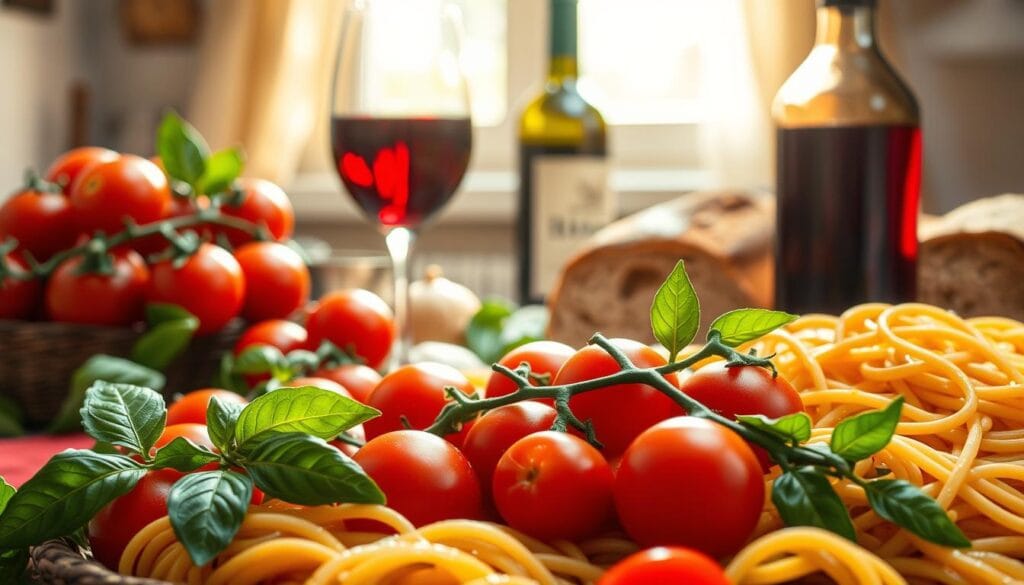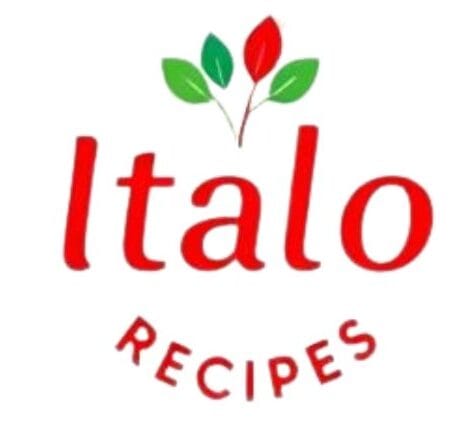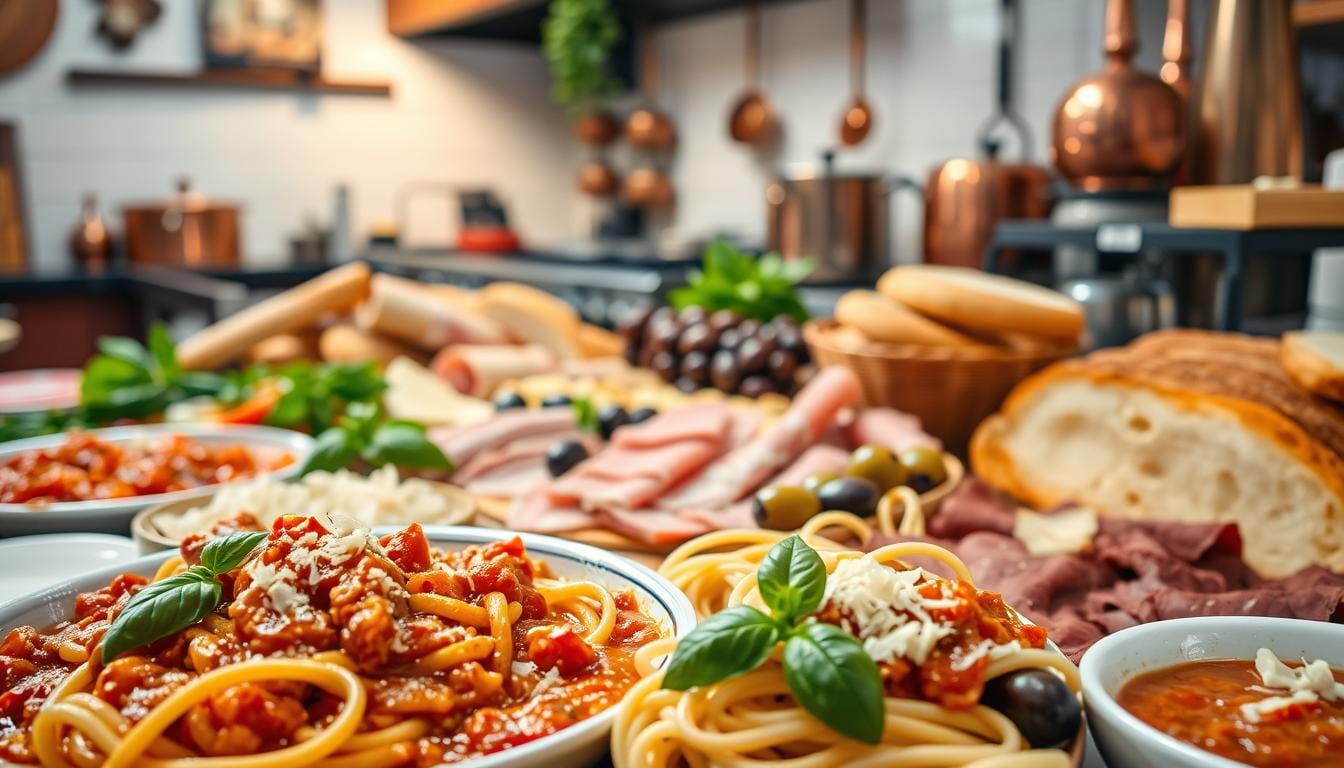10 Reasons Why Italian Cuisine is a Gastronomic Must
Why Italian Cuisine is the best:Imagine sitting down to a meal that’s not just tasty, but a journey through Italy’s rich culinary heritage. Italian culinary excellence is famous worldwide for using fresh, top-quality ingredients and traditional cooking methods.
You’re about to start a food adventure that shows off Italian meals’ diversity and cultural importance. From the Alps to the Mediterranean, Italian food reflects its regions, each with its own flavors and dishes.
Discovering Italian cuisine is more than just eating; it’s about learning a culture that sees meals as times to share with loved ones.
Table of Contents
Key Takeaways
- Italian cuisine is known for its rich flavors and aromas.
- The emphasis is on fresh, high-quality ingredients.
- Mealtimes in Italy are culturally significant.
- Diversity of dishes reflects regional variations.
- Italian cuisine is a reflection of its cultural heritage.
Rich Culinary Heritage and Tradition
Exploring Italian cuisine opens a world of flavors shaped by history and geography. It’s not just about taste. It reflects Italy’s cultural identity, shaped by tradition and exchange.
Historical Influences on Italian Cooking
Italian cuisine has been shaped by cultures like the ancient Romans, Greeks, and Arabs. They introduced new ingredients and cooking techniques. For example, Arabs brought citrus fruits, sugarcane, and eggplants, now common in Italian dishes.
The Mediterranean location made Italy a trade and cultural hub. This diversity is seen in Italian cooking today.
Regional Variations Across Italy
Italy’s regions have their own culinary traditions and specialties. The north is known for creamy sauces, while the south is famous for tangy flavors.
Geography plays a big role in these variations. Coastal areas have lots of seafood, while inland focuses on meat and produce.
| Region | Specialties | Key Ingredients |
|---|---|---|
| Tuscany | Ribollita, Pappardelle | Vegetables, Bread, Olive Oil |
| Campania | Pizza Margherita, Spaghetti alle Vongole | Tomatoes, Mozzarella, Seafood |
| Veneto | Risotto al Nero di Seppia, Bigoli in Salsa | Seafood, Risotto Rice, Onions |
Knowing about these regional differences helps us appreciate Italian cuisine’s diversity. Whether it’s a hearty risotto from the north or a pizza from Naples, you’re tasting Italy’s culinary heritage.
Fresh, High-Quality Ingredients
Italian cuisine is famous for using fresh, top-notch ingredients. This is why it’s so loved. From simple Caprese salads to complex risottos, the taste is always amazing. It’s not just about the ingredients, but how they’re mixed to create a truly Italian dish.
Importance of Seasonal Produce
Seasonal produce is key in Italian cooking. Chefs pick ingredients at their best to make dishes lively and tasty. This method not only makes food delicious but also helps local farmers and the environment.
In summer, you’ll find lots of fresh tomatoes, basil, and zucchini. Winter brings out root veggies and citrus fruits.
Popular Italian Ingredients
Some ingredients are must-haves in Italian cooking. Olive oil is used for cooking and as a finishing touch. Garlic and herbs like basil and rosemary add amazing flavors. Tomatoes, fresh or canned, are essential for many sauces and stews.
In Italian cooking, the goal is to let the ingredients shine. This means using the best ingredients for the best taste. By focusing on fresh, seasonal items and quality staples, Italian food stays flavorful and true to its roots.
Emphasis on Balance and Simplicity
Italian cuisine values simplicity and elegance. It uses a few, high-quality ingredients. This makes the best dishes stand out.
The idea of « the art of less is more » guides Italian cooking. It focuses on a few top ingredients. This creates a balance that’s both tasty and beautiful.
The Art of Less is More
Italian meals highlight the ingredients’ natural flavors. They don’t hide them with too many sauces or ingredients. For example, Bruschetta is a simple yet tasty appetizer. It has toasted bread, fresh tomatoes, basil, and olive oil.
Minimalism in Italian Dishes
Minimalism is key in Italian cooking. It makes dishes straightforward and lets the ingredients shine. Take Carpaccio, for instance. It’s thinly sliced raw beef with a simple dressing. This shows off the meat’s tender texture and rich flavor.
Exploring Italian cuisine shows its focus on simplicity and balance. It’s not just about the food. It’s also about the culture and history behind it. Italian cuisine stays true to its roots while embracing simplicity.
Bold and Diverse Flavors

Italian cuisine is full of surprises when it comes to flavors. It’s not just about rich sauces and big portions. It’s also about the careful use of spices and herbs that make dishes stand out.
Spices and Herbs That Elevate Dishes
Italian cooking loves fresh herbs like basil, rosemary, and thyme. These herbs add depth to dishes. Spices and other ingredients are mixed with them to create amazing flavors.
Some of the most commonly used herbs in Italian cooking include:
- Basil
- Rosemary
- Thyme
- Oregano
- Parsley
Iconic Flavor Combinations
Italian cuisine is famous for its iconic flavor combinations. Tomato and basil, garlic and olive oil, and lemon and rosemary are just a few examples. These combinations are not only tasty but also show the simplicity and freshness of Italian cooking.
| Flavor Combination | Dish | Description |
|---|---|---|
| Tomato and Basil | Caprese Salad | A simple salad of fresh tomatoes, basil, and mozzarella, dressed with olive oil. |
| Garlic and Olive Oil | Spaghetti Aglio e Olio | A classic pasta dish made with garlic, olive oil, and sometimes red pepper flakes. |
| Lemon and Rosemary | Lemon Rosemary Chicken | A flavorful chicken dish infused with the brightness of lemon and the earthiness of rosemary. |
These flavor combinations show the diversity and richness of Italian cuisine. They add depth to dishes and highlight Italy’s cultural and culinary heritage.
Pasta: A Love Affair with Tradition
Italians have a long-standing love affair with pasta. It’s a staple in their cuisine, loved for its versatility and variety. Pasta is a key ingredient in many dishes.
Exploring Italian pasta reveals a wide range of shapes and sizes. Each is perfect for different sauces and cooking methods. From spaghetti to conchiglie, the variety shows Italy’s culinary excellence over centuries.
Diverse Types of Pasta
Italian cuisine offers a vast array of pasta types. Each has its own unique qualities and uses. Here are a few examples:
- Spaghetti: Long, thin strands perfect for dishes like spaghetti carbonara or spaghetti Bolognese.
- Fettuccine: Flat, wide noodles made from egg and flour, ideal for creamy sauces like Alfredo.
- Penne: Tube-shaped pasta, great for chunky sauces that cling to its ridged surface.
Italian culinary experts say, « The art of pairing pasta with the right sauce is key. » This skill is seen in Italy’s many regional specialties.
« Pasta is the heart of Italian cuisine, a simple yet profound ingredient that has captured the hearts of people around the world. »
The Art of Traditional Pasta-Making
Making pasta is an art form passed down through generations. It starts with mixing durum wheat semolina with water. The dough is then kneaded and shaped into various forms. After drying, the pasta gets its firm texture.
Exploring Italian cooking shows the care in making authentic pasta dishes. Whether it’s spaghetti aglio e olio or lasagna, the tradition enhances your culinary journey.
Pizza: The Ultimate Comfort Food
Pizza is a comfort food that has become popular worldwide. It’s special because of the experience and emotions it brings. It’s not just about the ingredients or how it’s made.
Pizza started in Naples, Italy, with the classic Neapolitan pizza. It has a thin crust, fresh tomatoes, and mozzarella cheese. This pizza is a culinary masterpiece that has been perfected over centuries.
Origin of Neapolitan Pizza
The first true pizza was made in the late 18th century. Before then, flatbreads were cooked in wood-fired ovens. But it was Raffaele Esposito, a Neapolitan baker, who made the first modern pizza for Queen Margherita of Savoy.
This pizza, named « Pizza Margherita, » is still loved today. It’s made with simple yet high-quality ingredients. The crust is thin, and the cheese is creamy and slightly charred.
Variations Around the World
Italian immigrants took their pizza-making traditions with them. Now, you can find many types of pizzas worldwide. From Chicago’s deep-dish pizzas to New York’s thin-crust ones, there’s a pizza for everyone.
In the U.S., pizza is a staple in many cities. California-style pizza, with its unique toppings, is a favorite. In Italy, outside Naples, you’ll find pizzas that reflect local tastes and traditions.
Pizza’s global popularity comes from its comforting nature. Whether you’re in Italy or the U.S., pizza brings joy and comfort. It’s a dish that connects people from all over the world.
Wine Culture and Italian Cuisine
Wine is a big part of Italian cuisine. Different regions make high-quality wines that go well with local dishes. This makes wine a key part of Italy’s food culture.
Pairing wine with food is a long-standing tradition in Italy. The right wine can make a dish taste even better. For example, a strong Chianti goes well with ragù alla bolognese. A light Pinot Grigio is great with seafood risotto.
Pairing Italian Wines with Food
Pairing wine with food is both an art and a science. It’s about finding the right balance. Here are some classic pairings:
- Barolo with braised meats or game
- Prosecco with antipasto or during celebrations
- Gavi with creamy sauces or chicken dishes
Italian wines vary a lot, with each region focusing on different types. Knowing these differences helps you choose the best wine for your dish.
Notable Italian Wine Regions
Italy has many wine regions, each with its own style and traditions. Some of the most famous include:
- Tuscany: Known for Chianti and Brunello di Montalcino
- Piedmont: Famous for Barolo and Barbaresco
- Veneto: Produces Prosecco and Soave
These regions make some of the world’s best wines. They also play a big role in Italy’s food culture. Visiting these places can deepen your understanding of Italian wine-making.
In conclusion, wine is a key part of Italian cuisine. It adds flavor and authenticity to traditional dishes. By learning how to pair Italian wines with food and exploring the country’s wine regions, you can enjoy your meals more and appreciate Italy’s rich food heritage.
Health Benefits of Italian Diet

The Italian diet is known for its health benefits. It can help lower the risk of chronic diseases. By adding Italian food to your diet, you can see these benefits for yourself.
The Italian diet follows the Mediterranean diet’s principles. It focuses on fresh fruits, vegetables, whole grains, and healthy fats. Studies show it can reduce heart disease and some cancers.
Mediterranean Diet Principles
The Mediterranean diet is all about eating whole grains, fruits, and vegetables. It also suggests using olive oil instead of saturated fats. You can start enjoying these benefits by changing your meals a bit.
- Use olive oil as your primary source of fat.
- Incorporate a variety of fruits and vegetables into your meals.
- Choose whole grains over refined grains.
Fresh Ingredients for Nutritious Meals
Fresh ingredients are key in Italian cooking. They add flavor and nutrients to your meals. Eating seasonal produce makes your food both tasty and healthy.
| Ingredient | Nutritional Benefit |
|---|---|
| Tomatoes | Rich in vitamin C and lycopene, an antioxidant that reduces cancer risk. |
| Olive Oil | High in monounsaturated fats, which help lower total cholesterol and LDL (« bad ») cholesterol levels. |
| Leafy Greens | Packed with vitamins A, C, and K, and minerals like calcium and iron. |
Embracing the Italian diet means eating fresh, high-quality foods. It combines Mediterranean diet principles with nutritious ingredients. This makes Italian food a smart choice for better health and taste.
Global Influence and Popularity
Italian cuisine is loved all over the world. Its rich flavors and aromas win the hearts of food lovers everywhere. You can find the essence of Italian culinary excellence in many forms, from traditional pasta dishes to modern pizza creations.
Italian Cuisine Abroad
Italian cuisine travels the globe, adapting to local tastes while keeping its authentic roots. You can find Italian restaurants in major cities worldwide. They serve dishes that blend Italian traditions with local flavors.
This fusion has made Italian cuisine popular globally. It’s a favorite choice for many.
Italian Restaurants in the U.S.
In the United States, Italian restaurants are everywhere. They offer a wide range of dishes that show the diversity of Italian cuisine. You can enjoy classic dishes like spaghetti carbonara and risotto, and also innovative creations that reflect Italy’s rich culinary heritage.
The many Italian restaurants in the U.S. show why Italian cuisine is a top choice for Americans.

